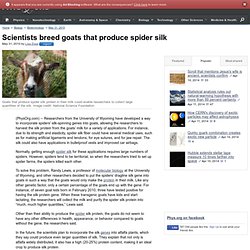

Genetic manipulation boosts growth of brain cells linked to learning, enhances effects of antidepressants. UT Southwestern Medical Center investigators have identified a genetic manipulation that increases the development of neurons in the brain during aging and enhances the effect of antidepressant drugs.

The research finds that deleting the Nf1 gene in mice results in long-lasting improvements in neurogenesis, which in turn makes those in the test group more sensitive to the effects of antidepressants. "The significant implication of this work is that enhancing neurogenesis sensitizes mice to antidepressants -- meaning they needed lower doses of the drugs to affect 'mood' -- and also appears to have anti-depressive and anti-anxiety effects of its own that continue over time," said Dr.
Luis Parada, director of the Kent Waldrep Center for Basic Research on Nerve Growth and Regeneration and senior author of the study published in The Journal of Neuroscience. Just as in people, mice produce new neurons throughout adulthood, although the rate declines with age and stress, said Dr. Dr. Scientists breed goats that produce spider silk. (PhysOrg.com) -- Researchers from the University of Wyoming have developed a way to incorporate spiders' silk-spinning genes into goats, allowing the researchers to harvest the silk protein from the goats’ milk for a variety of applications.

For instance, due to its strength and elasticity, spider silk fiber could have several medical uses, such as for making artificial ligaments and tendons, for eye sutures, and for jaw repair. The silk could also have applications in bulletproof vests and improved car airbags. Normally, getting enough spider silk for these applications requires large numbers of spiders. However, spiders tend to be territorial, so when the researchers tried to set up spider farms, the spiders killed each other. To solve this problem, Randy Lewis, a professor of molecular biology at the University of Wyoming, and other researchers decided to put the spiders’ dragline silk gene into goats in such a way that the goats would only make the protein in their milk. New Drug Can Treat Almost Any Viral Infection By Killing the Body's Infected Cells. A new broad-spectrum treatment for viruses could be as effective as antibiotics fighting bacteria, MIT researchers report.
The method uses cells' own defense systems to induce invaded cells to commit suicide, preventing the spread of the virus. In lab tests, the new drug completely cured mice that had been infected with influenza. Viruses work by inserting themselves into a cell and hijacking its machinery for its own use. The invaded cell then creates more copies of the virus, which involves creating long strings of double-stranded RNA — which contains the virus' genetic material, like DNA contains ours. When the virus is done copying itself, its hostage cell usually dies, from the virus bursting through its walls (lysis), changes to the cell's outer membrane, and from apoptosis, or programmed cell death.
This new drug therapy combines those dsRNA proteins with a protein that induces apoptosis. The DRACO therapy could be effective because it targets the host cell, not just the virus. The mechanism that gives shape to life. (Credit: Pascal Coderay/EPFL) Researchers at EPFL (Ecole Polytechnique Fédérale de Lausanne) and the University of Geneva (Unige) have solved the mystery of how genes determines the shape that many animals take.

During the development of an embryo, everything happens at a specific moment. In about 48 hours, it will grow from the top to the bottom, one slice at a time — scientists call this the embryo’s segmentation. “We’re made up of thirty-odd horizontal slices,” explains Denis Duboule, a professor at EPFL and Unige. “These slices correspond more or less to the number of vertebrae we have.” Every hour and a half, a new segment is built. DNA acts like a mechanical clock Very specific genes, known as “Hox,” responsible for the formation of limbs and the spinal column, are involved in this process.
The process is astonishingly simple. “A new gene comes out of the spool every 90 minutes, which corresponds to the time needed for a new layer of the embryo to be built,” explains Duboule.